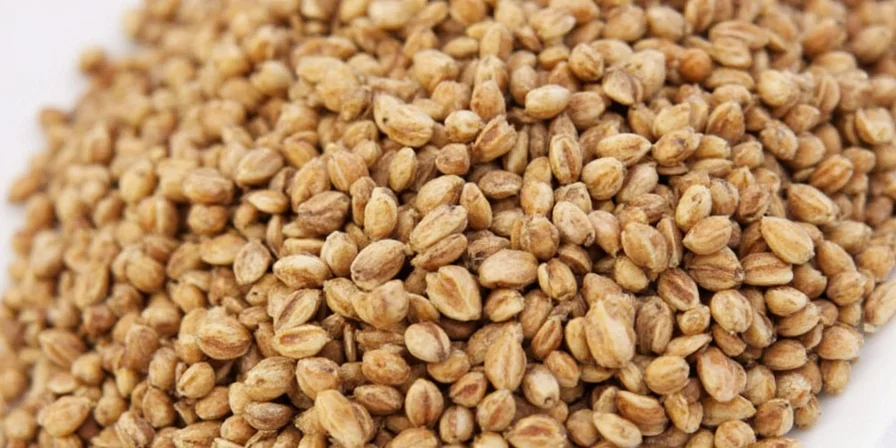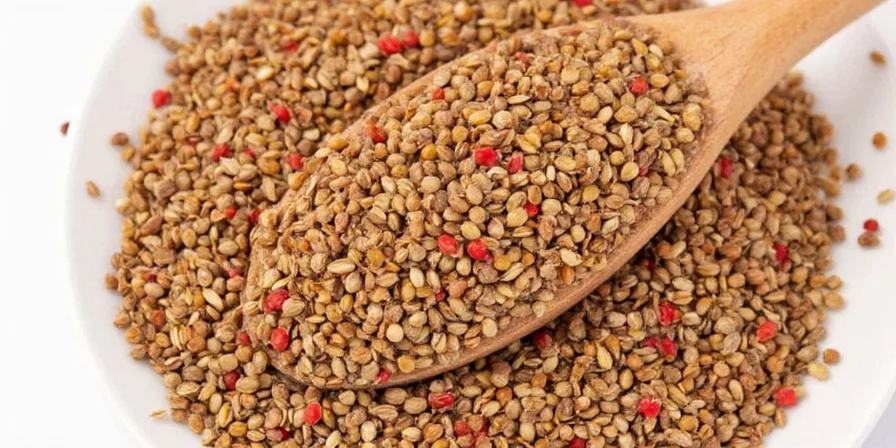Sesame seeds (also known as til seeds) are one of the world's oldest cultivated crops with over 5,000 years of history. If you've ever wondered what sesame seeds are, why they're good for you, or how to use them in everyday cooking, you've found the definitive guide. This article answers the most common questions about sesame seeds including their health benefits, proper storage methods, and 10 practical ways to incorporate them into meals - from beginner-friendly techniques to professional chef applications.
Table of Contents
- What Are Sesame Seeds?
- Nutritional Benefits and Health Facts
- How to Store Sesame Seeds Properly
- Basic Toasting Techniques for Beginners
- 10 Easy Ways to Use Sesame Seeds in Daily Cooking
- Advanced Culinary Applications
- Frequently Asked Questions
- Conclusion
What Are Sesame Seeds?
Sesame seeds (til seeds) come from the flowering plant Sesamum indicum. These tiny oilseeds have been cultivated since 3500 BC and are one of the oldest crops grown specifically for their oil. Available in white, black, brown, and red varieties, sesame seeds have a mild nutty flavor that becomes more pronounced when toasted. White sesame seeds are the most common variety found in Western supermarkets, while black sesame seeds are more prevalent in Asian cuisine.

Nutritional Benefits and Health Facts
One tablespoon of sesame seeds contains 52 calories, 2.1g protein, and impressive amounts of essential nutrients:
- Calcium: 88mg (7% daily value) - crucial for bone health
- Magnesium: 32mg (8% daily value) - supports nerve and muscle function
- Zinc: 0.6mg (5% daily value) - boosts immune system
- Healthy fats: 4.5g including beneficial monounsaturated and polyunsaturated fats
- Lignans: Sesamin and sesamolin with antioxidant properties
Research shows that consuming sesame seeds regularly may help reduce inflammation, lower cholesterol levels, and support heart health. Unlike many plant-based calcium sources, sesame seeds' calcium has relatively good bioavailability when consumed with vitamin D.
How to Store Sesame Seeds Properly
Proper storage preserves freshness and prevents rancidity:
- Whole seeds: Store in airtight container away from light at room temperature for up to 6 months
- Refrigeration: Extends shelf life to 12 months
- Freezing: Prevents rancidity for up to 18 months (ideal for bulk purchases)
- Ground seeds/tahini: Require refrigeration and should be consumed within 2 months
Unhulled sesame seeds last approximately 50% longer than hulled varieties due to their protective fiber layer. Always check for rancidity by smelling for any bitter or paint-like odors before use.
Basic Toasting Techniques for Beginners
Toasting unlocks sesame seeds' full flavor potential. Here's the foolproof method:
- Use a dry, heavy-bottomed pan over medium-low heat
- Add seeds in a single layer (don't overcrowd)
- Stir constantly for 2-3 minutes until golden
- Transfer immediately to a cool surface to stop cooking
- Let cool completely before using (prevents sogginess)
Warning: Sesame seeds burn quickly at 320°F (160°C). Never leave them unattended during toasting as they can go from perfect to burnt in seconds.
| Type | Flavor Profile | Best Uses for Beginners |
|---|---|---|
| White Sesame Seeds | Mild, nutty | Salads, baking, homemade breads |
| Black Sesame Seeds | Earthy, robust | Garnishing soups, rice dishes, sushi |
| Brown/Red Sesame Seeds | Complex, malty | Stir-fries, marinades, spice blends |

10 Easy Ways to Use Sesame Seeds in Daily Cooking
Start with these beginner-friendly applications before advancing to more complex techniques:
- Salad Topper: Sprinkle toasted white sesame seeds over green salads for added crunch
- Yogurt Mix-in: Combine with honey for a nutritious breakfast boost
- Rice Garnish: Add black sesame seeds to plain rice for visual appeal and flavor
- Homemade Bread: Mix into dough before baking for nutty flavor
- Simple Dressing: Whisk toasted seeds with olive oil and vinegar
- Stir-fry Finisher: Sprinkle over cooked vegetables at the end
- Oatmeal Enhancer: Stir into hot oatmeal with cinnamon
- Fish Topping: Press onto fish fillets before baking
- Homemade Granola: Add to your recipe for extra crunch
- Easy Tahini: Blend toasted seeds with oil (1:0.75 ratio) for quick sauce

Advanced Culinary Applications
Once comfortable with basic uses, try these professional techniques:
- Stable Tahini: Use neutral oil (not olive) at 1:0.75 ratio with 2% lemon juice by weight to prevent separation
- Elevate Noodle Dishes: Toss black sesame seeds with hot noodles off-heat for aromatic steam infusion
- Dual-Texture Coatings: Combine panko and sesame seeds 1:1 for fried foods
- Flavor Crisps: Press seed-oil mixture into molds, bake until golden, then shatter over dishes
- Til Ladoos: Toast seeds before jaggery addition to ensure firm texture in traditional sweets
Frequently Asked Questions About Sesame Seeds
Are sesame seeds the same as til seeds?
Yes, sesame seeds are called "til" in many South Asian languages. They refer to the exact same seed from the Sesamum indicum plant.
Can sesame seeds be used in nut-free kitchens?
Yes—they're seeds, not nuts, making them generally safe for tree nut allergies. Always verify facility allergen protocols for cross-contamination risks.
Why do my roasted sesame seeds taste bitter?
Bitterness indicates over-toasting. Seeds burn at 320°F (160°C)—use medium-low heat and remove at first golden hints. Cool immediately to stop cooking.
How do I prevent sesame seeds from sinking in batters?
Toss seeds in 1 tsp flour before folding into mixtures. This creates protective coating that maintains suspension during baking.
What's the difference between hulled and unhulled sesame seeds?
Unhulled seeds retain their outer layer, providing more fiber and nutrients but a slightly bitter taste. Hulled seeds are milder and creamier but lose some nutritional value.
Conclusion
Sesame seeds are incredibly versatile pantry staples that deserve regular use in home cooking. Whether you're a beginner looking to add simple crunch to dishes or an experienced cook exploring advanced techniques, there's a sesame seed application for every skill level. By understanding proper storage methods, mastering basic toasting techniques, and implementing the usage ideas shared in this guide, you can unlock the full flavor and nutritional potential of this ancient superfood.
Start with one or two beginner techniques this week—perhaps adding toasted seeds to your morning yogurt or sprinkling them over a simple salad. As you become more comfortable, gradually incorporate more advanced applications. Remember that the secret to great sesame seed usage lies in proper toasting and timely usage while they're still fresh and crisp.

Pro Tip:
For maximum freshness, store toasted sesame seeds in 2-tablespoon portions in freezer-safe bags. Thaw only what you need to preserve crunch for months.











 浙公网安备
33010002000092号
浙公网安备
33010002000092号 浙B2-20120091-4
浙B2-20120091-4